Both laminate and vinyl flooring are popular choices in modern homes. They’re cost-effective, attractive, and easy to maintain. But what’s the difference between them? And is one any better than the other?
That’s what we’re going to find out! We’re going to look at laminate versus vinyl flooring against a range of different criteria. And we’ll give you all the information you need to make the right choice for your home.
So step this way to find out everything you need to know!
What is the difference between laminate and vinyl flooring?
The first thing to note is that there are lots of different kinds of vinyl flooring. Sheet vinyl comes on a big roll. In many cases, you’ll be able to cover your floor with a single piece.
Other vinyl flooring comes in the form of tiles. This is most often printed with a design to resemble materials most commonly found in tile form – ceramic and stone.
But the kind of vinyl flooring that’s most similar to laminate is vinyl plank flooring. This is much thicker than tiles or sheet vinyl, and it comes in long strips. These usually lock together with a tongue and groove system. It’s this kind of vinyl flooring that we’ll be comparing with laminate here.
Vinyl flooring is basically plastic. The planks are made of a thicker version printed with a design, usually mimicking wood. One or two layers of polyurethane go on top to protect the design from wear and tear.
Laminate flooring, on the other hand, does contain some wood. The core is made from wood by-products – sawdust, in other words – which is bonded together with resin.
This is then printed with a design to look like real wood. And like vinyl flooring, a plastic layer goes on top to prevent the design from wearing away.
Like vinyl planks, laminate flooring usually has a tongue and groove structure for easier installation.
1. Appearance
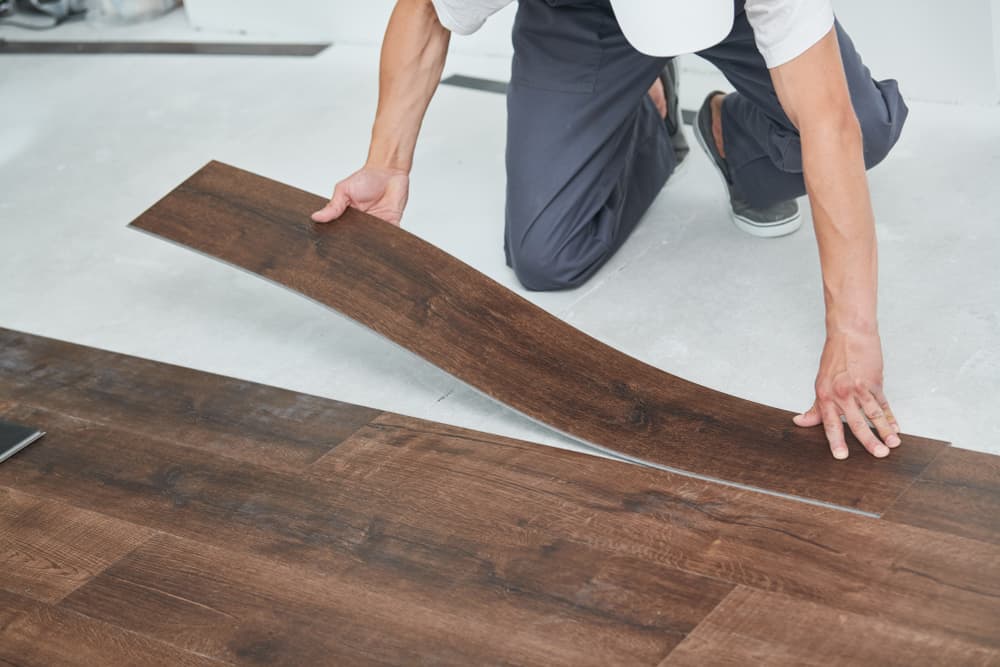
When it comes to the appearance of your flooring, it’s hard to tell the difference between laminate and vinyl. Both rely on high-quality printing techniques to give the look of different surfaces. And both have a protective coating on top.
Whether you’re looking for a floor to mimic stone paving, rustic floorboards, or ceramic tiles, either laminate or vinyl can be convincing. Get up close, though, and you’ll see the difference from the natural product. And the protective coating means they will feel quite different from those materials too.
That can, of course, offer some advantages. Real stone floors look beautiful, but they’re very hard – plates or glassware won’t survive a fall. And unless you have underfloor heating, they can be extremely cold too. Both vinyl and laminate flooring eliminate these problems.
And wooden floors require regular upkeep to keep them looking at their best. Laminate or vinyl options will give you the look whilst requiring far less maintenance.
2. Where can you use it?
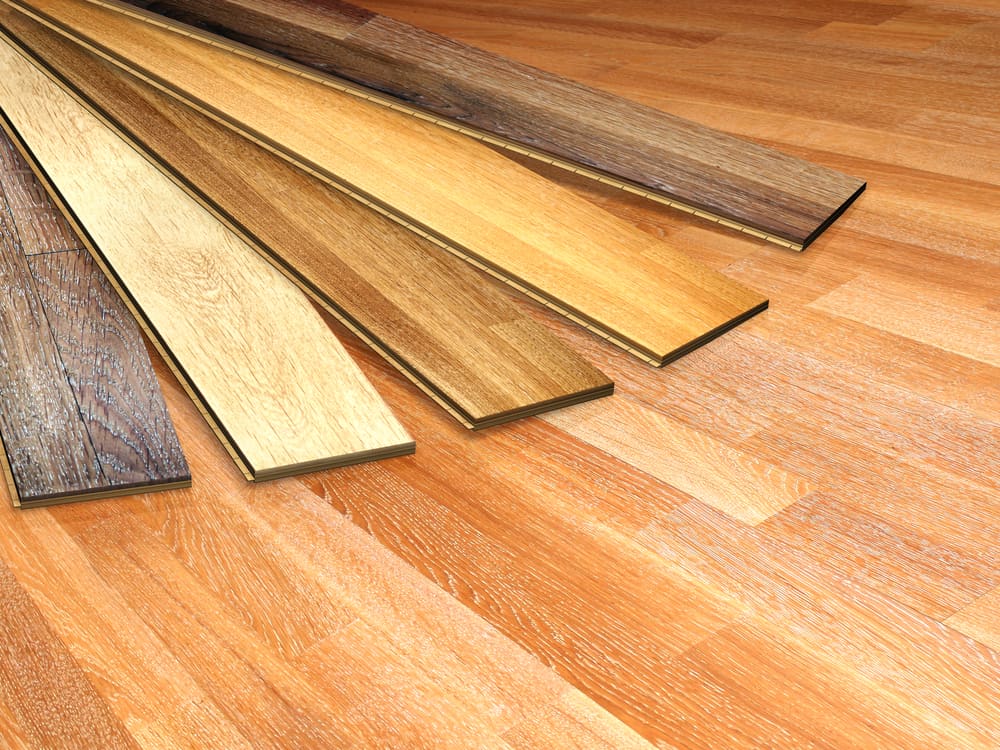
While laminate and vinyl flooring share many similarities, they are fundamentally different products. And that means they’re suited to different locations.
The key difference is their permeability to water.
Vinyl sheet flooring won’t let in water at all. Not only is the material itself impermeable to water, but it also usually covers the floor in a single piece. That means there won’t be any gaps for water to seep into.
Vinyl planks, on the other hand, will have some gaps between them. As long as they’re properly installed, those gaps should be pretty small. But if the water stays on the surface for any length of time, it can seep through.
The good news, though, is that it will do very little damage when it does. Because the planks are made of vinyl they won’t degrade. So your floor will remain solid, even if some moisture gets underneath.
That makes vinyl a great choice for more damp or humid areas, like bathrooms, kitchens or utility rooms.
Laminate, on the other hand, is more vulnerable to moisture. As with vinyl planks, there will be small gaps between the strips of flooring that can let in water. And because the core of the product here contains wood, that can cause damage.
For that reason, it’s best to keep laminate to rooms that are unlikely to be troubled by much moisture. In most climates, you’re unlikely to have any difficulties if you use it in living rooms, dining rooms or bedrooms.
If you want laminate but live in an area that experiences high levels of humidity, don’t despair. Look for high-pressure laminate flooring. This is specially constructed using glue that absorbs less moisture.
3. Your flooring and air quality
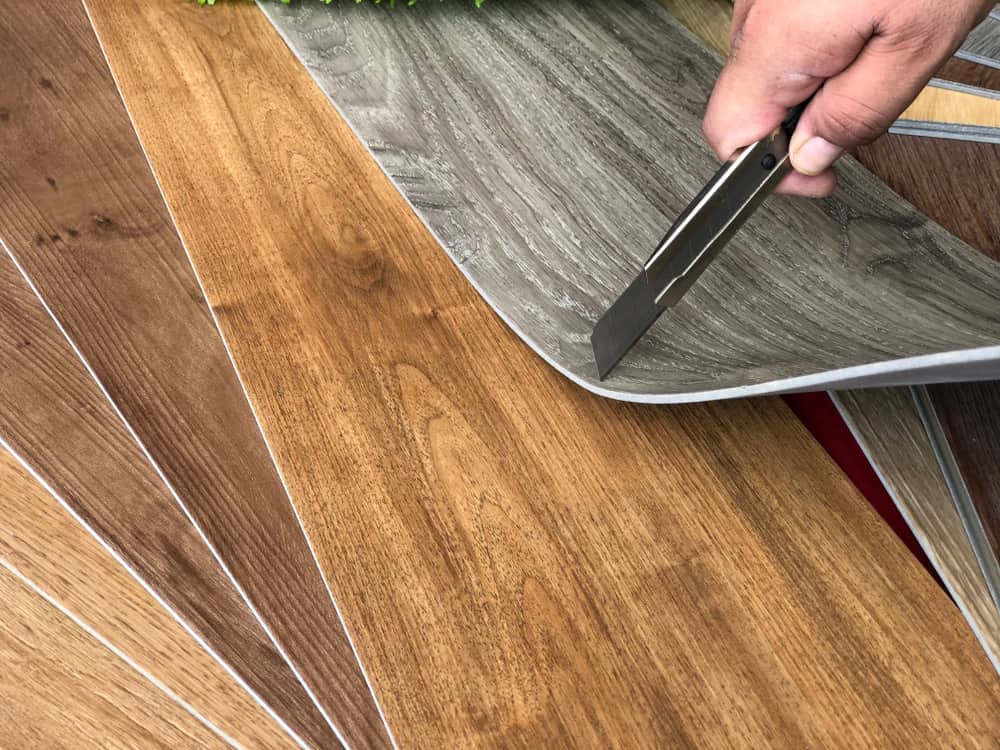
Vinyl flooring has one big drawback when it comes to use in your home – it can give off toxic chemicals.
Vinyl contains a range of chemicals, and some of them are harmful to health. Manufacturers have tried to respond to concerns by certifying certain kinds of vinyl flooring as low in VOCs – volatile organic compounds.
But while low-VOC options are certainly better, some chemicals are still present. These can be emitted into the air in your home. And even good ventilation can have a limited impact on their concentration.
One study showed significant differences in the chemical composition of urine in children from homes with vinyl floors. Their urine contained 15 times more benzyl butyl phthalate metabolite than that of children from homes without vinyl floors.
That’s concerning, because that chemical has been linked to respiratory and reproductive disorders, as well as to skin irritation.
Laminate flooring, on the other hand, doesn’t contain chemicals of this kind. And the chemicals it does contain are largely held within the core of the flooring. That means it won’t affect the air quality of your home in the same way.
But there is a caveat here. Some laminate flooring has been found to contain high levels of formaldehyde.
If you want to eliminate the risk of chemicals altogether, natural products are a better choice. Wood, stone or cork won’t present any of these problems. And neither will linoleum, which is considerably less expensive than other natural options.
4. Environmental considerations
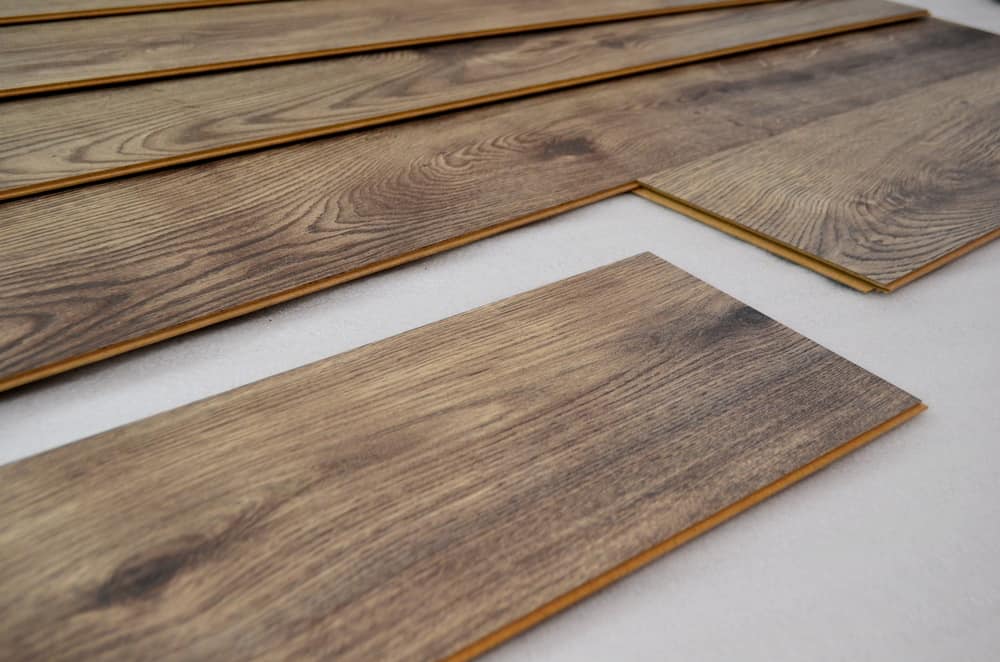
Laminate flooring also wins out over vinyl when it comes to environmental sustainability.
Vinyl is produced using petroleum, which isn’t a renewable resource. Its production generates toxic chemicals. And there are very few recycling facilities. The vast majority of old vinyl flooring will find its way into landfill. And once there, it will continue to leach chemicals into the ground.
Laminate flooring, on the other hand, can be produced more sustainably. The wood used in its production is a by-product of sawmills. Just make sure that any laminate flooring you buy is certified by the FSC. That means the wood will have come from sustainably managed forests.
Laminate flooring is also easily reused and recycled. Take it up carefully, and it can be laid in another room. And if that’s not an option, take it a recycling center. The particleboard core can be easily reused in other applications.
5. Fire safety
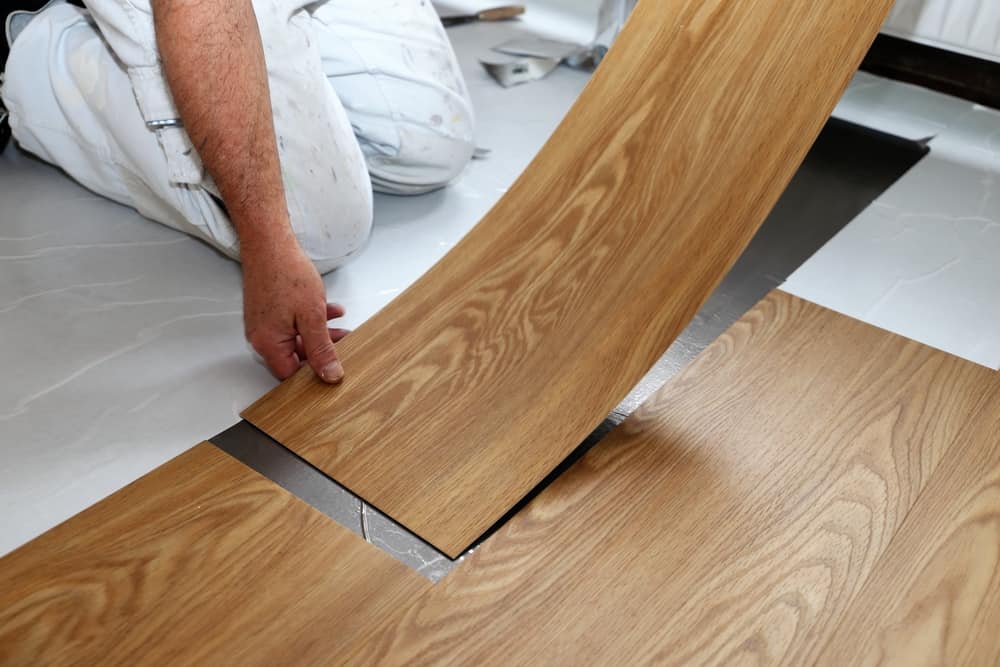
One other factor it’s important to consider for any material in your home is fire safety. All flooring materials sold for domestic use will have been tested for fire safety. But the way they react to fire will differ depending on what they’re made of.
Vinyl flooring is fairly resistant to ignition. But once it’s alight, its impermeability to water means it can be hard to extinguish.
It will also release toxic chemicals when heated, well before the point at which it catches fire. These chemicals include hydrogen chloride, which can be fatal.
Laminate flooring is moderately flammable. The chemicals phenol and formaldehyde are used to sandwich together with the different layers. When they burn, they release toxic gases including carbon monoxide and nitrous oxide.
6. How easy is it to install?
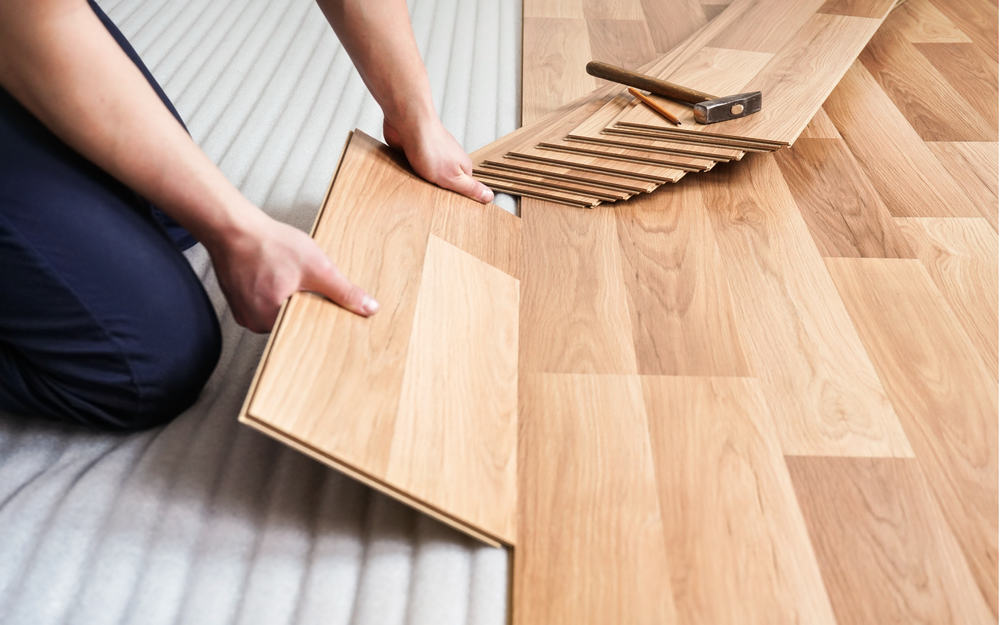
Both laminate and vinyl plank flooring are installed in a very similar way. In both cases, you’ll need underlayment. And both use tongue and groove designs so that they click together easily.
There is, though, a difference when it comes to cutting the materials to size. Whatever the size and shape of your room, you’ll need to do some cutting at the ends of rows. And you’ll find that considerably easier with vinyl plank flooring than with laminate.
With vinyl planks, if you’re making a short cut you can score through the surface with a utility knife. You can then turn the plank over and snap it off. For longer cuts, though – for example, if you need to reduce the width of a plank – a jigsaw is recommended.
Laminate is much tougher and isn’t amenable to the scoring technique. Instead, you’ll need a handsaw, or even a power saw to cut through it.
So which is better?
The choice between laminate and vinyl flooring will depend on your priorities.
They have a lot in common. Both are inexpensive, easy to use and maintain, and offer a wide choice of designs. And the costs are similar too.
But there are important distinctions.
Vinyl flooring is better for areas that may be exposed to higher levels of moisture or humidity. And it’s easier to cut to size using the score-and-snap technique.
But it contains toxic chemicals, including some which can be released into your home after it’s in place. And its manufacture and disposal has a more serious impact on the natural environment than laminate flooring.
Whatever option is right for you, we hope our guide has helped you make an informed choice.
Laminate sucks. Vinyl doesn’t.